Before summer falls to autumn, I thought I’d share the story of its passage, starting with my trip to the Sangam House near Bangalore, India in May.
First some background: India is the country I have most wanted to visit for more than two decades now. In 1999, I landed a job at a feminist magazine in Delhi, bought a plane ticket and a visa, and even secured an apartment—only to cancel the trip when my dad was diagnosed with cancer two weeks before my departure. Thankfully, he pulled through like a champ, and when it seemed like I could reschedule the trip several months later, I bought a package of Hindi language tapes to start preparing. Every single one of them, however, was blank. Then I visited the local Indian restaurant (in Corpus Christi, Texas) to try to find a language tutor there. Nope: it had just gone out of business. At that point, an Indian friend sat me down and said, “How many signs do you need? It’s clearly not the time for you to go to India yet.”
So I didn’t. Half a decade later, I tried again, but those plans went bust too. Five years later, ditto. Considering that I’ve visited 39 other countries without a hitch, I started thinking India just wasn’t meant to be. But when I heard that DW Gibson, the director of my favorite writer’s colony Art Omi, was co-founding a new residency in South India called Sangam House, I began dreaming of it all over again. I applied last fall and got accepted for a three-week residency ending right before my 40th birthday. Was it time to re-attempt fate?
Soon after handing in grades at UNC-Chapel Hill, I caught a flight to Bangalore and then a 2 a.m. taxi to the tiny village of Nrityagram an hour away. The writer Rahul Soni had kindly waited up to show me to my bedroom/studio, which was perfumed by bowls of fresh jasmine. I awoke the next morning to wondrous sights: women in saris on their way to dance class, women in saris hanging laundry on a line, women in saris out walking a dog, women in saris hoeing vegetables in the garden. Nrityagram is a dancer village that operates under the traditional gurukul system, meaning students not only study with their Guru but live alongside them too, cooking, cleaning, and tending the land. It was founded in 1990 by Protima Gauri Bedi, a famous model-turned-actress-turned-dancing icon who tragically died in the Himalayas during a Buddhist pilgrimage. Four powerful women run the repertory today, granting instruction in Odissi (one of India’s eight classical dance forms) as well as yoga, martial arts, mime, meditation, Indian literature, Sanskrit, and mythology.
In recent years, they’ve started renting out a string of cottages called Kula to other artists. That’s where Sangam House comes in. Twice a year, co-founders DW Gibson and Arshia Sattar invite writers from around the world to work there on projects of their choosing. My group consisted of eight novelists, essayists, journalists, and poets from India, Poland, Zimbabwe, Singapore, and the United States, and we fast formed one of the most harmonious groups I have experienced anywhere.
Our days went something like this: rising either at 7 or when the crows starting tapping on the windows (whichever came first) followed by breakfast (papaya plucked from a tree and a steaming cup of chai, or rice idli cakes smothered in sambar and chutney); a long session of writing; lunch (vegetarian curries, dal, chipatis, chutneys, saffron rice, yogurt, and spicy pickles eaten with hands from a tin plate while sitting cross-legged in an open-air structure); another session of writing; a community yoga class held either in an open-air studio or an outdoor amphitheater; the final session of writing; and then dinner followed by a moonlit walk, a reading, or drinking whiskey in a circle while contemplating the day that had passed and the day that awaited.
Twice, we visited Bangalore: once to give a reading at the Atta Galatta Bookshop and another for a mega-shopping spree at FabIndia. (I swear I’m not a clothes horse, but there’s just something about bindis and salwars and duppatas and bangle bracelets and handbags embroidered with tiny mirrors that make me giddy!) We also spent happy hours gaping at the offerings of Blossom Book House (the busiest shelves I’ve seen outside The Strand in New York City) and sipping chai at the old-world literary hangout Koshy’s, where gray-haired, white-clad men lounged about, talking art and politics.
Then Tendai (the Zimbabwean novelist), Majid (the Kashmiri journalist), Gayaz (the Indian taxi driver who should have been a NASCAR racer), and I took a road trip to Mysore. There, we traipsed through a palace in bare feet; haggled over incense and oils in a labyrinthine market; got photographed many times by strangers seemingly in awe over the abundance of my Texan hair; gorged on masala dosas at the greatest truck stop in the universe (Vasudev Adiga’s); and chewed on, gagged from, reveled in, and spat out our first paan.
On one of our last days together, we ordered rickshaws and set out for the neighboring village of Hessaraghatta, where we drank rum and ThumsUp in a dimly-lit bar with cinderblock walls and curtains pulled for privacy; crashed a wedding party; paid a vendor a few rupees to hack the tops off some coconuts with a machete so we could drink the milk through a straw; and bought a final strand of jasmine for our writing tables.
The last day, we ordered another rickshaw and ventured to the oddly-named Our Native Village, where I treated myself to an ayurvedic massage that consisted of stripping down to nothing, climbing on a wooden table, and melting into it as a 5-foot woman in a turquoise sari rubbed thick, warm, medicinal oils into every crevice and pore, starting with my hair and then working down to my toes.
The final night, after six of us had already departed, Wei-Ling (the Singaporean essayist) and I were incredibly lucky to catch a performance by Nrityagram’s principal dancers: Surupa Sen and Bijayini Satpathy (aka The Goddesses) as well as their protégé Pavithra Reddy. Odissi dance is based upon the yogic poses held by sculptures carved in Hindu temple walls 2,000 years ago. Each pose is like a word, and as the dancers fluidly move from one to the next, they create sentences. Every gesture of the hand, slap of the foot, and arch of the brow adds meaning, and before you know it, a story is unfolding—of creation and destruction, of man and woman, of light and dark, of war and peace. They were so expressive, so joyful, so luminous, we rode out to Bangaluru International Airport for our midnight flights in states of altered bliss.
And that, my friends, was India, the most sensory-stimulating place I’ve visited yet, and absolutely worth the 40-year wait.
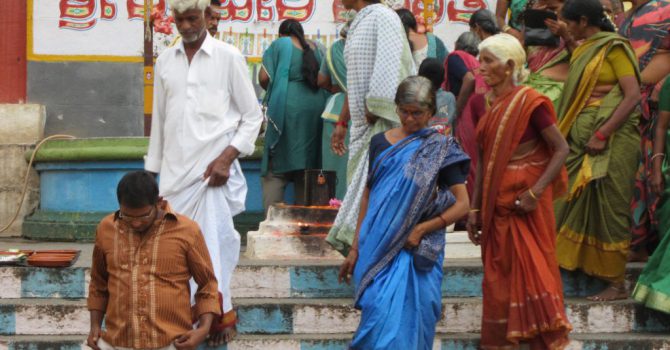
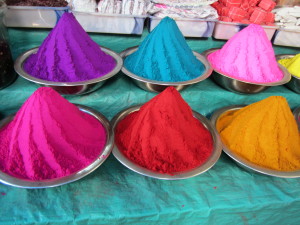
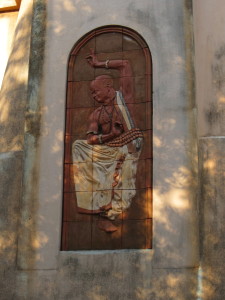
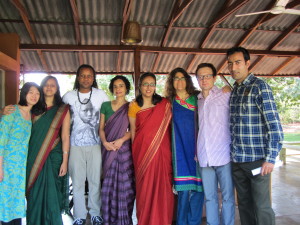
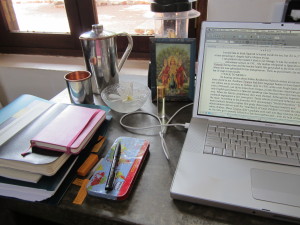

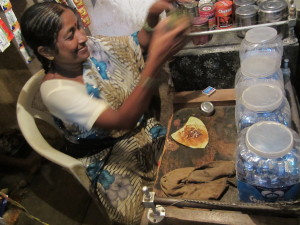

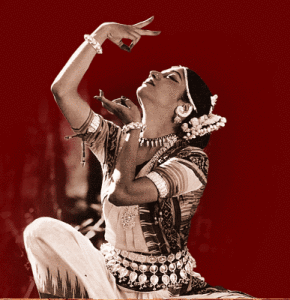
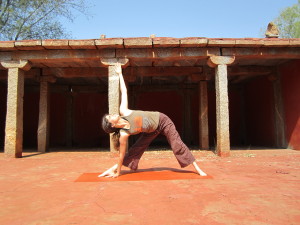
What a lovely travelogue complete with gorgeous photos! Thank you for sharing your long awaited journey with me!
Sensory is exactly the right word. Thank you thank you for this lovely account – I may be a long way from India these days, but am going to have papaya for breakfast in tribute.
Sounded beautiful, mysterious and amazing.